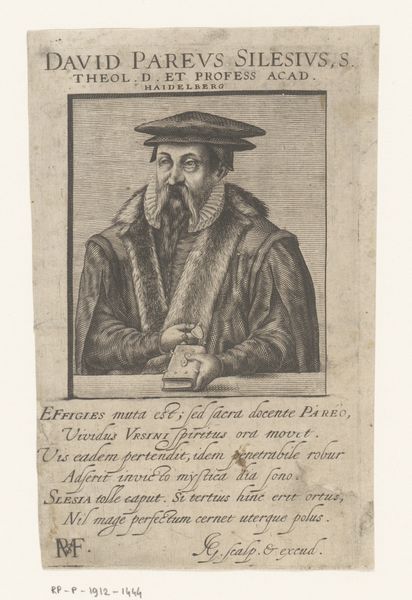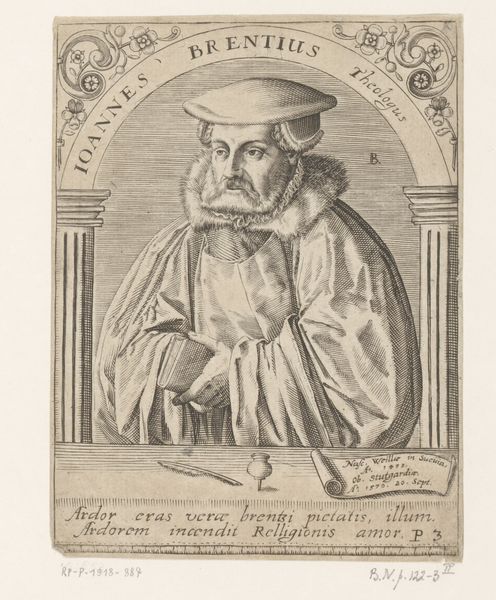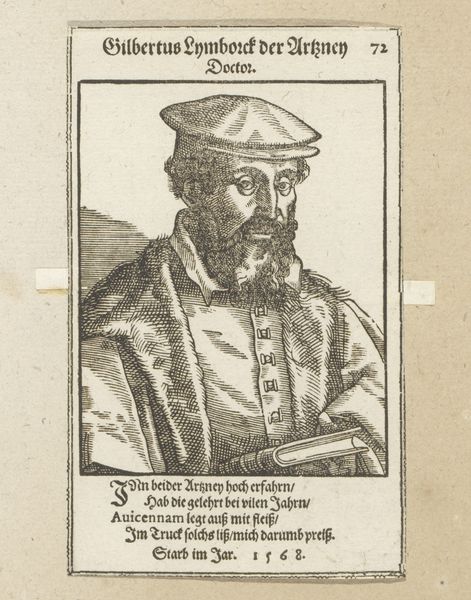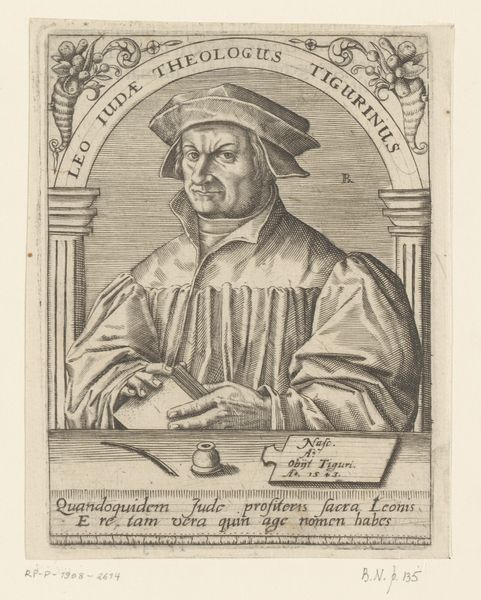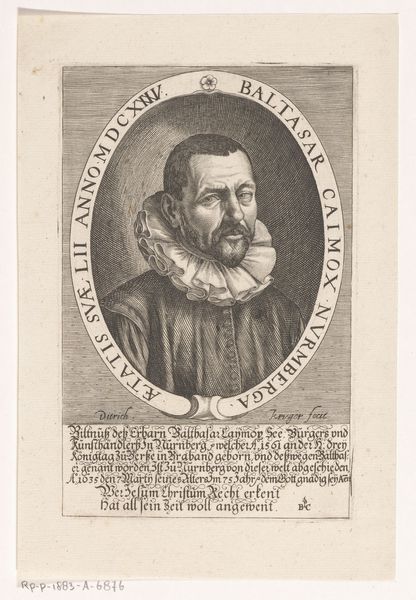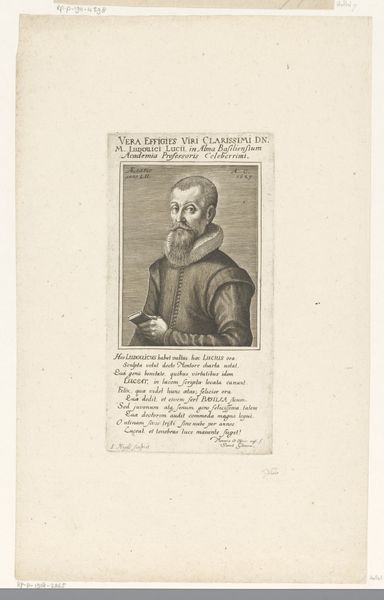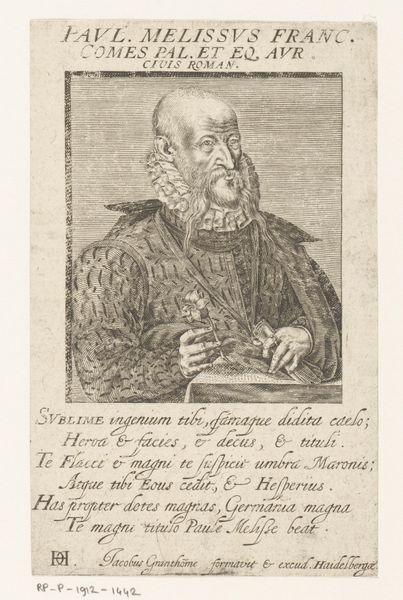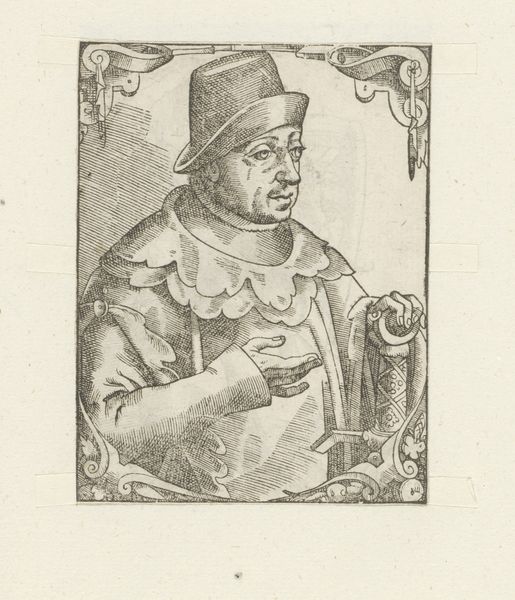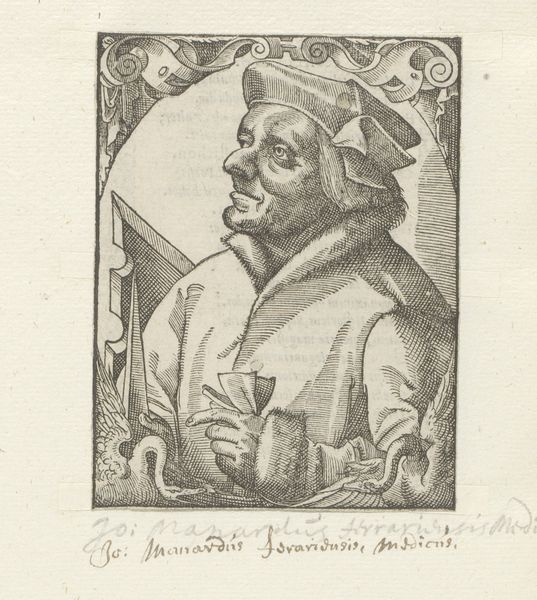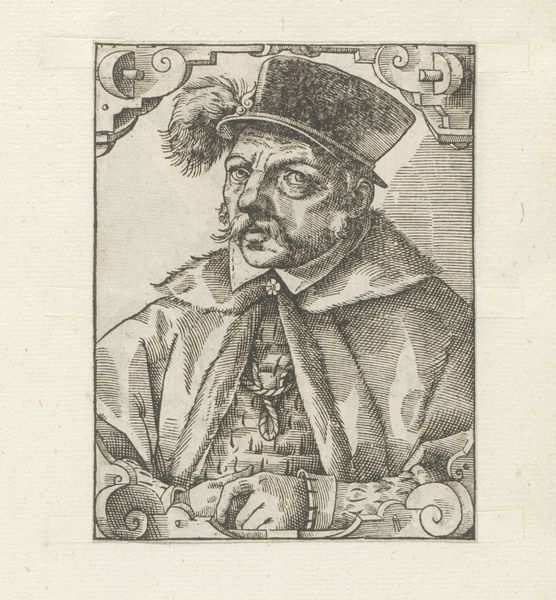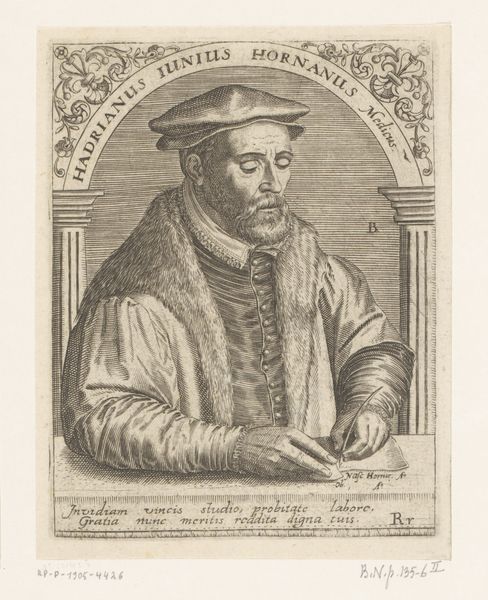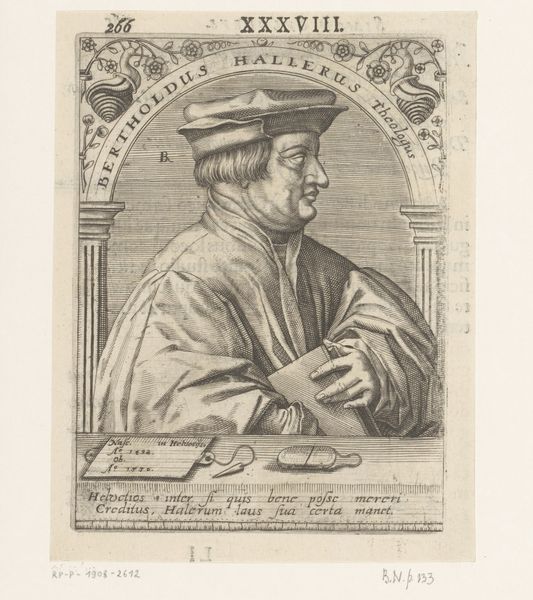
print, engraving
#
portrait
# print
#
old engraving style
#
northern-renaissance
#
engraving
Dimensions: height 137 mm, width 88 mm
Copyright: Rijks Museum: Open Domain
Curator: This is a print titled "Portret van Johannes Hus," made sometime between 1588 and 1622. The piece you see before you, held at the Rijksmuseum, is an engraving. Editor: It has a rather somber feel to it, despite its small scale. The subject is presented in profile, looking steadfast and thoughtful, but the grayscale tones create a sense of austerity. You almost feel as though he is looking to some tragic, invisible future. Curator: Absolutely. Engravings, by their nature, often lend themselves to such weighty feelings, and this portrait encapsulates that. Johannes Hus, a Czech theologian and philosopher, was a key predecessor to the Protestant Reformation. Look how deliberately he’s positioned with quill and paper. The image implies that Hus himself controls both the narrative and the religious future. Editor: That’s interesting. For me, it also begs the question about the printing and distribution process. I imagine that an image like this could have quickly spread and become somewhat iconic in certain reformist circles. The relatively easy reproduction that’s implicit in the work affects the status of Hus himself. I wonder about the skill and labor required to carve all those delicate lines to produce the engraving? Curator: The text, “IOAN HVSSVS, MARTYR CONSTANTISSIMVS,” signals exactly what function the work was meant to fulfill—ensuring the perseverance and martyrdom of Hus in collective memory. His clothing suggests status but without excess; more intellectual than lavish. And while austere as you pointed out, it does still represent continuity through very powerful images. Editor: Right, and thinking about this "memory," I wonder about the cost, availability and reach of a printed work like this versus a large painting on a wall. You can own a small work and carry it with you, like a relic. Curator: It speaks volumes, doesn’t it? Editor: Yes. Examining its materiality and considering its reception makes you realize it holds incredible power in shaping narratives across time.
Comments
No comments
Be the first to comment and join the conversation on the ultimate creative platform.
